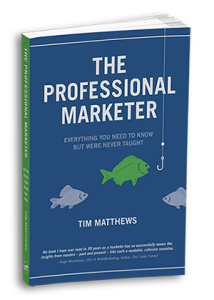Estimated Reading Time: 3 minutes
 English majors certainly have a leg up in the content marketing world, what with their trove of literary references and practiced writing flow. But what about Econ majors? It struck me recently that there’s an important contribution that knowledge of economics could make to help your content marketing execution.
English majors certainly have a leg up in the content marketing world, what with their trove of literary references and practiced writing flow. But what about Econ majors? It struck me recently that there’s an important contribution that knowledge of economics could make to help your content marketing execution.
Economics is the study of the production, distribution, and consumption of goods and services. Content marketing fits neatly into this context. It’s not about amassing a stockpile of assets but rather creating a system of production and distribution that gets the job done at the right price.
We’ll take a look at content marketing through an economist’s lens, first covering production and distribution, and then moving on to consumption and profitability. Of course, when you create content, you need to begin with the ultimate consumer in mind, but I think it’s a worthwhile exercise to consider how you can reach your audience before getting too concerned with measuring the outcome.
Production
You can spend a lot on content, or you can spend almost nothing. For ease of comparison, we’ll assume that your content marketing team’s salaries constitute a fixed cost and focus on the variable cost of paying writers, graphic artists, or analysts to produce various assets.
Let’s look at three typical assets you might produce: a blog post, a nice infographic, and an in-depth survey. Hiring a freelancer to write a short blog post costs in the neighborhood of $500. A professionally done infographic can set you back $5,000. Hiring a specialist research firm to write and conduct a survey, including paying for the research panel, can easily cost $50,000. I’m using round numbers that are in the ballpark of what I have seen available on the market to make the math easy for all you English majors. You can certainly pay less or more.
Here we have three different potential assets, each an order of magnitude different in price. How do you decide where to spend your money? You could have ten blogs for each infographic and a hundred for each study!
Obviously, if you are budget constrained, you stick to blogging. But if you have $10,000, how should you spend it? It’s actually too early to answer that question, because you have not taken the cost of distribution into account. Sure, you can post it on your blog, but do you have the audience? Unless you can get it viewed widely via organic means, you will need to pay to promote it.
You should also factor in—as we’ll discuss in the second part of this post—what you can ask in return for access. For a post on your own site, you get retargeting for free, and you can begin to show readers display ads via Google AdWords or AdRoll. With a well done pop-up, you can convert a fraction of new visitors to blog subscribers. A more valuable approach, like an in-depth study based on survey results, will yield a higher number of more valuable conversions that contain name, email, and perhaps other valuable details.
Ultimately, determining how to spend that $10,000 comes down to consumption. For example, you may be able to drive the traffic you need with blog posts, but only a survey report with hard-to-get information will convince someone to give you their details. Or maybe you are in a very crowded market, with lots of bloggers posting on topics you want to own. A spiffy infographic with a unique angle might stand out.
Once you have a sense of what you want to produce, it’s time to consider what type of distribution you will need and what it will cost.
Distribution
Distribution is the movement of goods from the source through the channel to the ultimate consumer. These days, thanks largely to social media, there are all kinds of inexpensive distribution channels through which you can deliver your content to customers. Which is the right one to use?
There are three considerations: cost, reach, and ownership.
Cost is a straightforward component. Going organic via your blog, Twitter feed, or Facebook account are essentially free. You can also pay to use some of those channels. So-called paid social, such as promoted tweets, costs money per conversion. Content syndication through a service like Madison Logic, Outbrain, Taboola, or TechTarget can be just as expensive for lower quality traffic. Just like physical goods, you have production costs and distribution costs.
Next is reach. You may not be able to get in front of the customers you want. That’s why Google, Twitter, LinkedIn, and others will sell you audiences. You may not have the ability to reach every pet food tester in North America for your new halitosis treatment. So you will need to pay. Content syndicators sell you access to the demographic you want to read your content. Building your own audience organically takes time you might not have.
Last is ownership. I work in the software business, and at every company I’ve worked, there’s been a tension between taking advantage of the reach of distribution and sacrificing direct access to the customer. Building your own database is always preferable, but it can take years. So you will likely need some paid distribution as you build your list.
Next up, consumption and profitability. We’ll take a look at what your conversion goals are, how much it costs per conversion, and what it’s really worth. You won’t always have these numbers to work with when you start, so you may need to make some assumptions about production and distribution when you start out.
 Want to learn even more about marketing?
Want to learn even more about marketing?